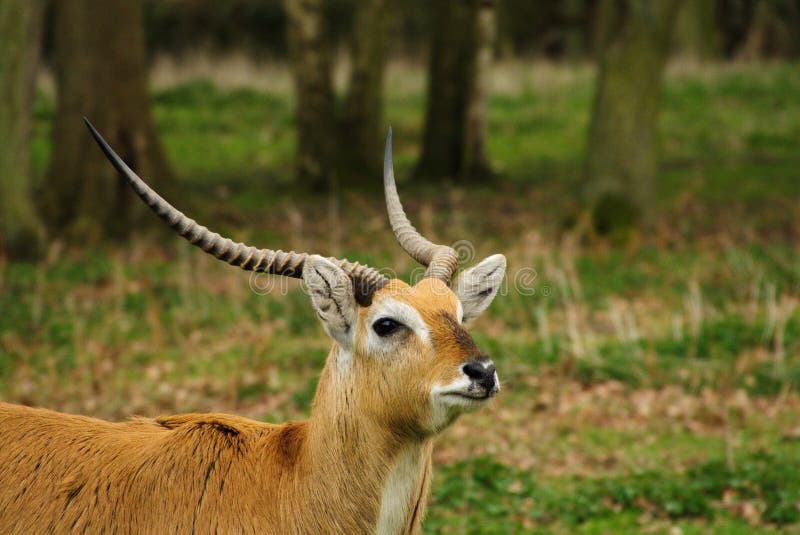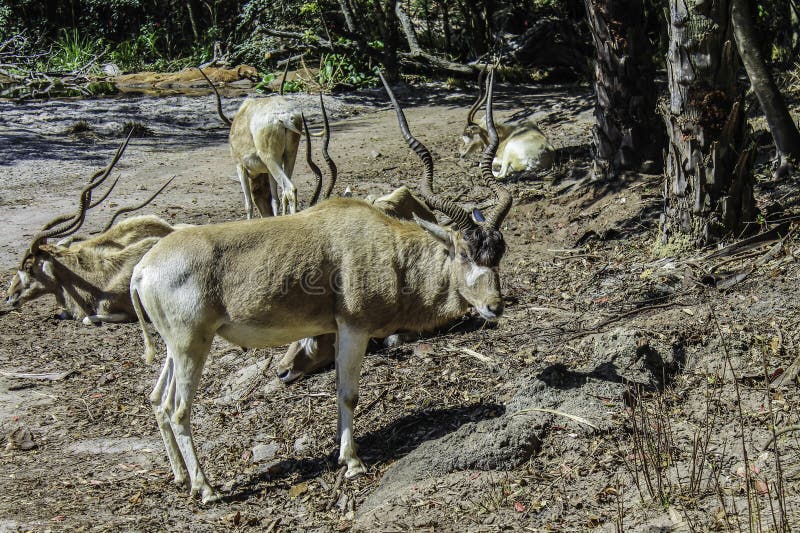
Their horns are prized for supposed medicinal and magical powers in many places. Antelopes play a significant role in many cultures.Acute senses of smell and hearing give nyala the ability to perceive danger at night out in the open (when predators are often on the prowl). Their horizontally elongated pupils also help in this respect. Their eyes are placed on the sides of their heads, giving them a broad radius of vision with minimal binocular vision. Like many other herbivores, nyala rely on keen senses to avoid predators.Nyala may sometimes follow feeding baboons, picking fallen fruits and leaves which baboons dislodge from trees.Nyala have hairy glands on the feet, which leave their scent wherever they walk.The name "nyala" is the Tsonga name for this antelope, which is likely the source of the English, along with Zulu "inyala".They also react to the alarm calls of impala, baboon, and kudu. Alert and wary in nature, nyala use a sharp, high, dog-like bark to warn others in a group about the danger. But nowadays they are becoming less shy and often come out in the sight of tourists. Most sightings of nyala in the wild are at water holes. They are very shy in nature, and like remaining hidden rather than coming out in the open. During the hot hours of the day, these antelopes usually rest in thick bushes. They browse during the day if temperatures are 20-30 ☌ (68-86 ☏) and during the night in the rainy season. Nyala are active mainly in the early morning and late afternoon. Nyala are not territorial animals and the home ranges of males are approximately equal to that of females and overlap extensively.

Herds usually feed and drink water together.

Females often remain near their mothers when they have their offspring, so the relationships in female herds may be considered relatively closer than that of males. They live in groups of up to 10 individuals that may be mixed or may contain only females or only males. The males are highly prized as game animals in Africa. The principal threats to the species are poaching and habitat loss resulting from human settlement. Its population is stable and it has been listed as of Least Concern by the International Union for Conservation of Nature (IUCN). It has been introduced to Botswana and Namibia, and reintroduced to Eswatini, where it had been extinct since the 1950s. The nyala's range includes Malawi, Mozambique, South Africa, Eswatini, Zambia, and Zimbabwe. After a gestational period of seven months, a single calf is born. Males and females are sexually mature at 18 and 11–12 months of age respectively, though they are socially immature until five years old. The main predators of the nyala are lion, leopard and Cape hunting dog, while baboons and raptorial birds prey on juveniles. They inhabit thickets within dense and dry savanna woodlands. They live in single-sex or mixed family groups of up to 10 individuals, but old males live alone. The nyala does not show signs of territoriality, and individuals' areas can overlap. A shy animal, it prefers water holes rather than open spaces. As a herbivore, the nyala feeds upon foliage, fruits and grasses, with sufficient fresh water. It generally browses during the day if temperatures are 20–30 ☌ (68–86 ☏) and during the night in the rainy season. The nyala is mainly active in the early morning and the late afternoon. It exhibits the highest sexual dimorphism among the spiral-horned antelopes. Only males have horns, 60–83 cm (24–33 in) long and yellow-tipped.

Females and young males have ten or more white stripes on their sides. The coat is maroon or rufous brown in females and juveniles, but grows a dark brown or slate grey, often tinged with blue, in adult males. It was first described in 1849 by George French Angas. It is a species of the family Bovidae and genus Nyala, also considered to be in the genus Tragelaphus. The lowland nyala or simply nyala ( Tragelaphus angasii ), is a spiral-horned antelope native to southern Africa (not to be confused with the endangered Mountain nyala living in the Bale region of Ethiopia).


 0 kommentar(er)
0 kommentar(er)
